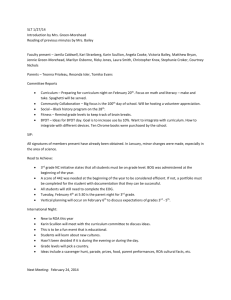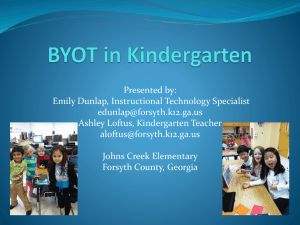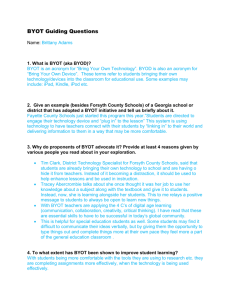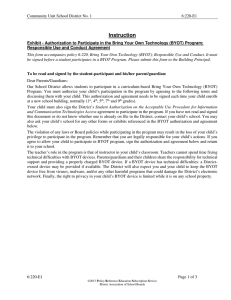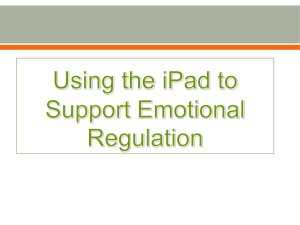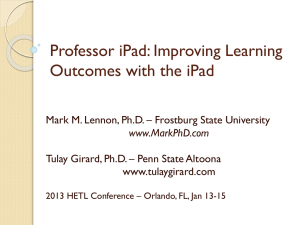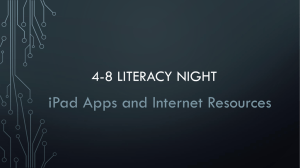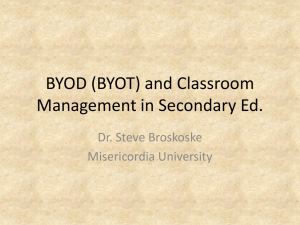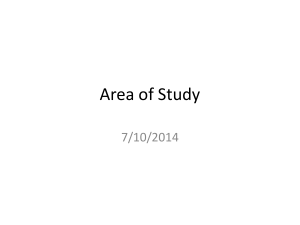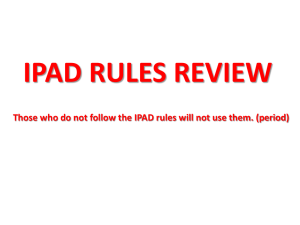New Opportunities for Schools, Jason Arruzza, St Luke`s
advertisement
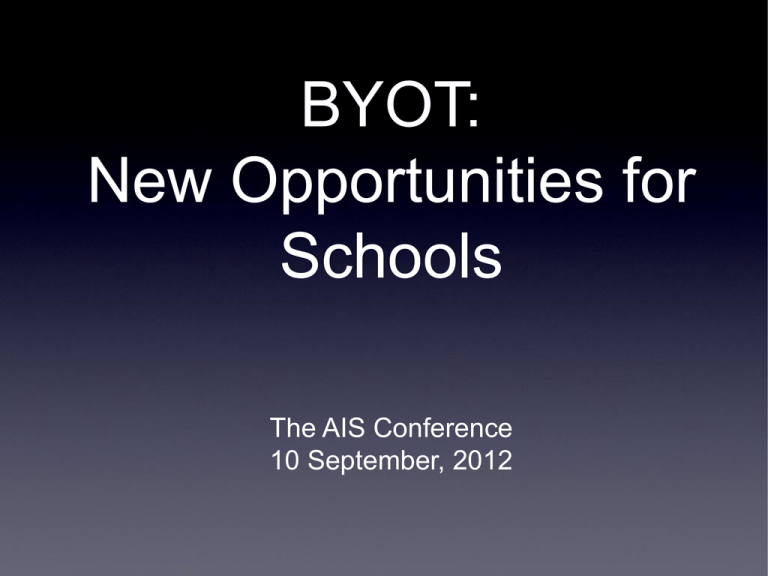
BYOT: New Opportunities for Schools The AIS Conference 10 September, 2012 BYO in General • • • • • Bring Your Own Device/Technology/Computer/Laptop Students bring their own device of a minimum specification The School offers access to the internet More reliance on evolving web services (i.e. email, storage, content), less on Standard Operating Environments (SOE’s) Appropriate behavior-focused policies to support responsible and effective use would be put in place. What’s Driving BYO? • Consumerisation of IT • faster, broader bandwidth availability • availability of software, platforms and infrastructure-as-a-service • people actually like to use their own gear Towards a ‘Cloud-based’ approach • Old Way: • • • • • Standard Operating Environments (SOE) • • • Only School-owned technology Data ‘in-house’ on file servers School-owned Software licensing +90 second logins • • • New Direction: Tools-based software approach Student-owned technology on School Infrastructure Data in “the cloud’ SaaS, PaaS, IaaS through a browser “Instant-on” • Ubiquitous access to modern technology now makes it possible for student learning outcomes that are broader, deeper, more relevant, more complex, and more creative than we could ever imagine. BYO...? • What “type” of BYO program? • BYOD • a stepped approach, based on Schools’ readiness for change • Can include ‘Virtual Desktops’ (VDI), ‘mandated technologies’ and “walled gardens” • “pure” BYOT • The Future BYOT “Readiness” Factors • Normalised use of the digital • Genuine home-school collaboration • Principal’s leadership • Appropriate infrastructure • Champions • Education authority (if applicable) BYOT is an educational development and a supplementary school technology resourcing model. A home/school collaboration in arranging for students’ 24/7/365 use of their own digital technologies to be extended into the classroom...assisting in students’ teaching, learning, the organisation of their schooling and, where relevant, the complementary education outside the classroom. BYOT Fundamentals SOURCE: Lee, 2012 Trust is Key to BYOT • BYOT is based on an assumption of trust in – not mistrust of – the students and the professionalism of teachers • Students’ ownership of the technology and data are respected. • Technology is chosen by the student or family. • Schools can advise, but not mandate. • There is an enhanced facility for the personalisation of teaching and learning in and outside the school walls. • The recognition that the in-school use of the students’ digital technology is an extension from students’ existing use of that technology to assist their selfteaching and learning • Authentic home-school collaboration is integral to the school’s achievement of the normalised usage of the students’ technology BYOT at St Luke’s Supporting Systems • Schools’ online environments • Learning Management Systems (LMS) • Web mail, Cloud storage • Portals, subscriptions, School website What the School Provides: • 1 Gbps Internet (lightly filtered) • fast internal network • online environments • basic support AARNet Supporting Infrastructure • Only the uninformed think BYOT is actually cheaper for the School! • Costs to plan for: • Big pipe w/ unlimited data • fast internal network • excellent, high-density WiFi The Problem: • How to achieve 100% uptake? • How to include and develop teachers to: • Buy in to the model • improve skills in ‘a new way of working’? BYOT: 5 Year Plan • Continue Y10-12 BYOT • BYOiPad Year 7’s 2013, 2014 • MY 2013 & 2014: Evaluate progress • Establish ‘true’ BYOT for 2015 7-12 going forward BYOT Continuum “Working well digitally” Year 7 BYOiPad Program 2013-2014 2010 2011 2012 2013 2014 2015 PRIMARY OBJECTIVE: • Significantly reduce weight of textbook load • Current (total) weight of Y7 texts >10KG 2013 Year 7 BYOiPad at St Luke’s • Based on Danebank’s successful 7-10 compulsory iPad program: http://ipad.danebank.nsw.edu.au/ • A two-year program over 2013 & 2014 • Vision: “Fully” BYOT 7-12 in 2015 SECONDARY • UsedOBJECTIVES as a toolset by teachers to assist in differentiating the curriculum • Majority of students and teachers will increase fluency of ‘working well digitally’: • use Internet for research and school tasks appropriately; • Take notes in and out of class; • Capture, edit & share images, sound and video; • Draw/sketch/create artworks; • Find, collect and analyse data; • Stay organised! What will it look like? • Families will provide their Year 7 students with an iPad for use at School • Students will load their prescribed textbooks onto iPads • School-provided FAST WiFi Internet access BYOiPad v. BYOT Same device Same OS Prescribed Apps Student chooses device Family-owned Student chooses OS Family-supported Student chooses software Prescribed texts loaded Quasi-SOE approach Tools-based approach Why iPad? Why the iPad? • excellent as an eReader • largest market share • most developed “ecosystem,” stable OS • largest uptake in Schools • robust, well-engineered device • weighs ~600 grams • exceptional battery life • “instant on” Costings: student texts Publisher Oxford Pearson Pearson Pearson Jacaranda Pearson RWP RWP MacMillan Jacaranda Title myWorldAtlas Global Explorations Touche Stage 1 Science Focus Artwise Heinemann Poetry 1 Trash Boy in the Striped Pyjamas A Midsummer's’ Night Dream Retroactive Stage 4 KLA Format Paper edn $ Geography App or web $62.95 Geography ePub $69.95 Languages pdf $36.00 Science ePub $71.20 Visual Arts pdf $67.95 English pdf $32.70 English epub $17.95 English ePub $23.95 English epub $17.95 History pdf & web $69.95 Total: $470.55 1 Yr license $ $19.90 $34.98 $18.00 $35.60 $33.98 $16.35 $8.25 $9.63 $0.00 $48.50 $225.18 Costings: Apps • TBC. Looking at ~$60 budget for Prescribed Apps 2012 Timeline: • July 31: 2013 Y7 parent info night • August : Complete eText & Apps lists, identify 2013 Y7 teachers • September: provide 2013 Y7 teachers with iPads, texts & Apps • Oct/Nov: Program planning & testing, PD • December: 2013 Y7 BYOiPad Staff Day 1 • January: Y 7 BYOiPad Staff day 2 Expectations of Students • Open and manage their own iTunes account • Come to school with a charged battery • Have all prescribed texts and apps loaded Expectations of Parents • Support the program • supervise appropriate use at home • decide how to help manage student’s App purchases Expectations of Teachers • Support the program • Invest time in building fluency in iOS to support teaching & learning • Learn along with students about new new ways of working well digitally End Presentation • http://byot.me • http://byot.stlukes.nsw.edu.au/
